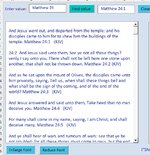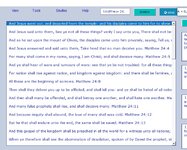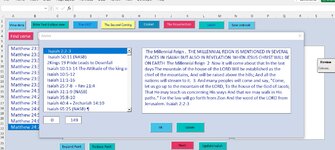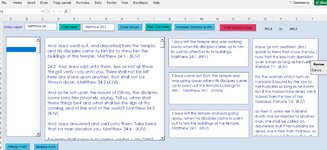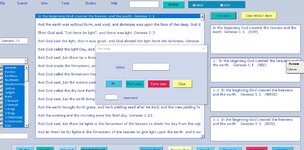Many through the years to the present wish this were possible. That is for Excel's Listbox have the ability either with Properites or coding
to display selected items in a paragraph(i.e., text wrapping) instead of 1 line per row, even though the underlying cell values have their alignment property set to wrap the
text in the cell( It doesn't show that way in the Listbox view, as we all know.
Please see images below. One is a textbox displaying FIND method results; the other is a
Listbox displaying the same FIND method results but all results are always on ONE LINE. The fact that they both appear with spacing should be ignored for this
question. In both the textbox and Listbox that's easy enough to accomplish with code or just by inserting blank rows on the underlying sheet.
Many answers to this question have suggested something called a "DataGrid Flex control' that they feel could and would easily accomplish this task.
What in the world is a DataGridFlex control? I cannot find it in either of the Excel Controls toolboxes.
The one big advantage I see of a listbox over a textbox for displaying records is that Listbox records can be easily linked to other data in columns to the right on the sheet
and results of long text lines can be displayed in a textbox.
Textbox items have, to my knowledge, no way to be identified as singular entities because they don't occupy their own rows.
Sorry for long explanation. Any help would be greatly appreciated.
cr
to display selected items in a paragraph(i.e., text wrapping) instead of 1 line per row, even though the underlying cell values have their alignment property set to wrap the
text in the cell( It doesn't show that way in the Listbox view, as we all know.
Please see images below. One is a textbox displaying FIND method results; the other is a
Listbox displaying the same FIND method results but all results are always on ONE LINE. The fact that they both appear with spacing should be ignored for this
question. In both the textbox and Listbox that's easy enough to accomplish with code or just by inserting blank rows on the underlying sheet.
Many answers to this question have suggested something called a "DataGrid Flex control' that they feel could and would easily accomplish this task.
What in the world is a DataGridFlex control? I cannot find it in either of the Excel Controls toolboxes.
The one big advantage I see of a listbox over a textbox for displaying records is that Listbox records can be easily linked to other data in columns to the right on the sheet
and results of long text lines can be displayed in a textbox.
Textbox items have, to my knowledge, no way to be identified as singular entities because they don't occupy their own rows.
Sorry for long explanation. Any help would be greatly appreciated.
cr

